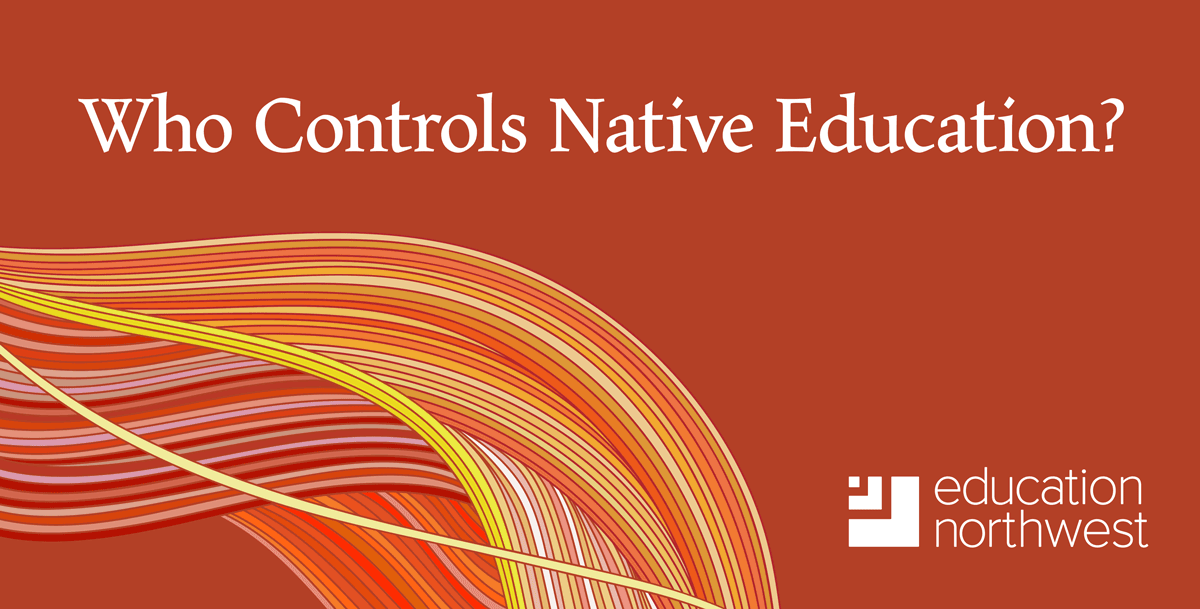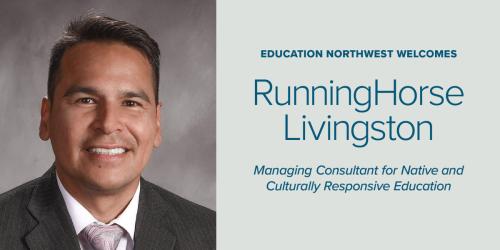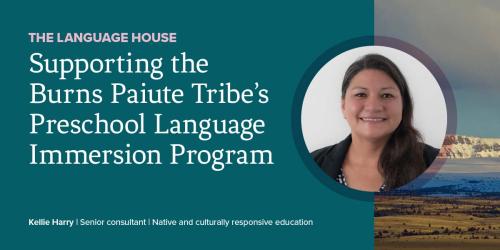Who Controls Native Education?

The National Indian Education Association’s (NIEA) 2021 Annual Convention and Trade Show brought educators to Omaha, Nebraska, to discuss the theme of Native Control of Native Education: A Time to Lead. The convention’s theme was an acknowledgement that for Native communities, formal education has historically been imposed from outside and has undermined Tribal sovereignty and traditional Indigenous ways of teaching, learning, and knowing.
According to Mandy Smoker Broaddus, a practice expert in Native education at Education Northwest, the event’s theme reflects a new movement in Native education, acknowledging that “we need to take back the education of our young people and decide as Tribes and peoples and communities what we want those systems to look like.”
Smoker Broaddus attended the conference along with Kellie Harry, senior advisor in Native and culturally responsive education at Education Northwest, and Sarah Pierce, a manager at Education Northwest.
The convention’s opening keynote speaker, Dr. David Beaulieu, a longtime Native educator, shared his experience of the historical progression of Native education. According to Harry, Beaulieu’s presentation provided context for “what’s it’s taken to get Indian education to this point, and where we still need to go.”
“We need to take back the education of our young people and decide as Tribes and peoples and communities what we want those systems to look like.”
These efforts have included the creation of Tribally controlled schools, the development of public school curriculum on Native history and culture, and especially the facilitation of consultation between Tribes and school districts. “That was not something that was traditionally honored,” Harry says of Native involvement in public schools. “It's been a long process and a lot of work to get us where we need to be.”
This movement is especially meaningful for Native educators, who have traditionally had to find a balance between assimilationist practices that satisfy federal policies and traditional, Native routes to knowledge. “I think it’s about fighting for Tribes’ power and sovereignty to create these systems,” says Harry, “and to credential our work in a way that’s honored as equal to the Westernized educational system.”
The convention also included a strand of workshops on trauma-informed practices, including some led by the National Native Children’s Trauma Center. According to Pierce, “These workshops underscored the resiliency of Native students and educators and also spoke to the shift that is taking place in Native education. There is a real movement happening. There is a desire to tell the true and accurate histories of Native people and to revitalize Native ways of teaching and learning.”
Native Ways of Knowing
Traditional Native approaches to education are often experiential. The conference featured a project, “Honoring Tribal Legacies: An Epic Journey of Healing," with an experiential learning component. The project originated with the National Parks Service but is being further developed by the NIEA to build out a more authentic curriculum—an example of Native control in practice. The project offers educators resources to present a more inclusive account of Lewis & Clark’s journey of “discovery”—one that acknowledges and incorporates the viewpoints of the Tribes who had long existed in the lands the expedition encountered.
Native educational traditions, Smoker Broaddus says, often incorporate instructional practices such as apprenticeships and focus on concept mastery and community. “In the Western paradigm,” she says, “the conveyor belt just keeps going, and if you don’t get it, that’s kind of on you.”
Indigenous systems, by contrast, are more deliberate, involving “learning something, understanding it, knowing how to apply it, and then earning the trust of your community, because it meant survival for everybody else that you were able to perform a certain activity,” says Smoker Broaddus. “I think mastery is a thing we’ve gotten away from in education, because we want students to learn so much in a short period of time.” As an example of how Native approaches could benefit all students, she points to presentations by educators from Hawaii, who shared innovative work on alternative means of content mastery and assessment, rooted in Native Hawaiian traditions.
The Work Ahead
The conference also addressed the role of research and technical assistance in this effort to establish Native control of education. “We have an opportunity to push research to be more culturally nourishing and to honor these practices and voices,” says Pierce. “As advocates and allies, we’re working to bridge the research and develop resources that elevate Native voices.”
For Smoker Broaddus, the goal is to support school and community self-sufficiency and control. “We want to build capacity that’s helping them on their path toward self-determination. That’s how it has to work. We want to walk alongside them, and definitely not come in as top-down experts, but really collaborate.”
The convention offered an opportunity for Smoker Broaddus and Pierce to share some of their work from the Regional Educational Laboratory (REL), and particularly the cross-REL group focused on American Indian, Alaska Native, Native Hawaiian, and Pacific Islander communities.
“It was important because I don’t think folks that attend NIEA are aware of REL services and research capabilities, and there could be an opportunity to do more for these communities,” Smoker Broaddus says. “RELs should really be seeking out these stakeholders. People were very interested in the projects we talked about.”
At the convention, Harry says she could see the power of bringing educators committed to this work together in one place. “There’s a lot of pieces to the puzzle,” she says, “and NIEA is the perfect place to put the puzzle together. How can Native people collaborate to create systems that are going to be effective for them and their children? This is the work ahead.”


